Suzuki Jimny Review
GOOD STUFF
Adorable design, off-road prowess, plenty of equipment
BAD STUFF
It’s now a van only. Iffy crash-test rating
OVERVIEW
WHAT IS IT?
It’s the Suzuki Jimny, or ‘Jimmy’ as every smartphone and laptop auto-correct feature insists on calling it. Good luck Googling one of these if you decide you want one.
‘Want one’ tends to happen about three seconds after clapping eyes on the Jimny. Cuter than a Jeep Renegade and as sturdy looking as a Mercedes G-Class (but at six-tenths the scale), it’s one of those instantly desirable pieces of design, like a Fiat 500 or whatever Apple’s attached a lower-case ‘i’ to this week.
Jimnys have extremely loyal buyers, but for every one potentially warded off by the new model going ‘fashion’, we’d wager it’s won five new fans via social media who’d never have had it on their radar before.
The old Jimny lasted an astonishing 20 years on sale. In those two decades, three things boomed in popularity: SUVs, downsizing, and retro. So the new Jimny, complete with its 1.5-litre petrol engine and functionally honest design, looks like a masterstroke.
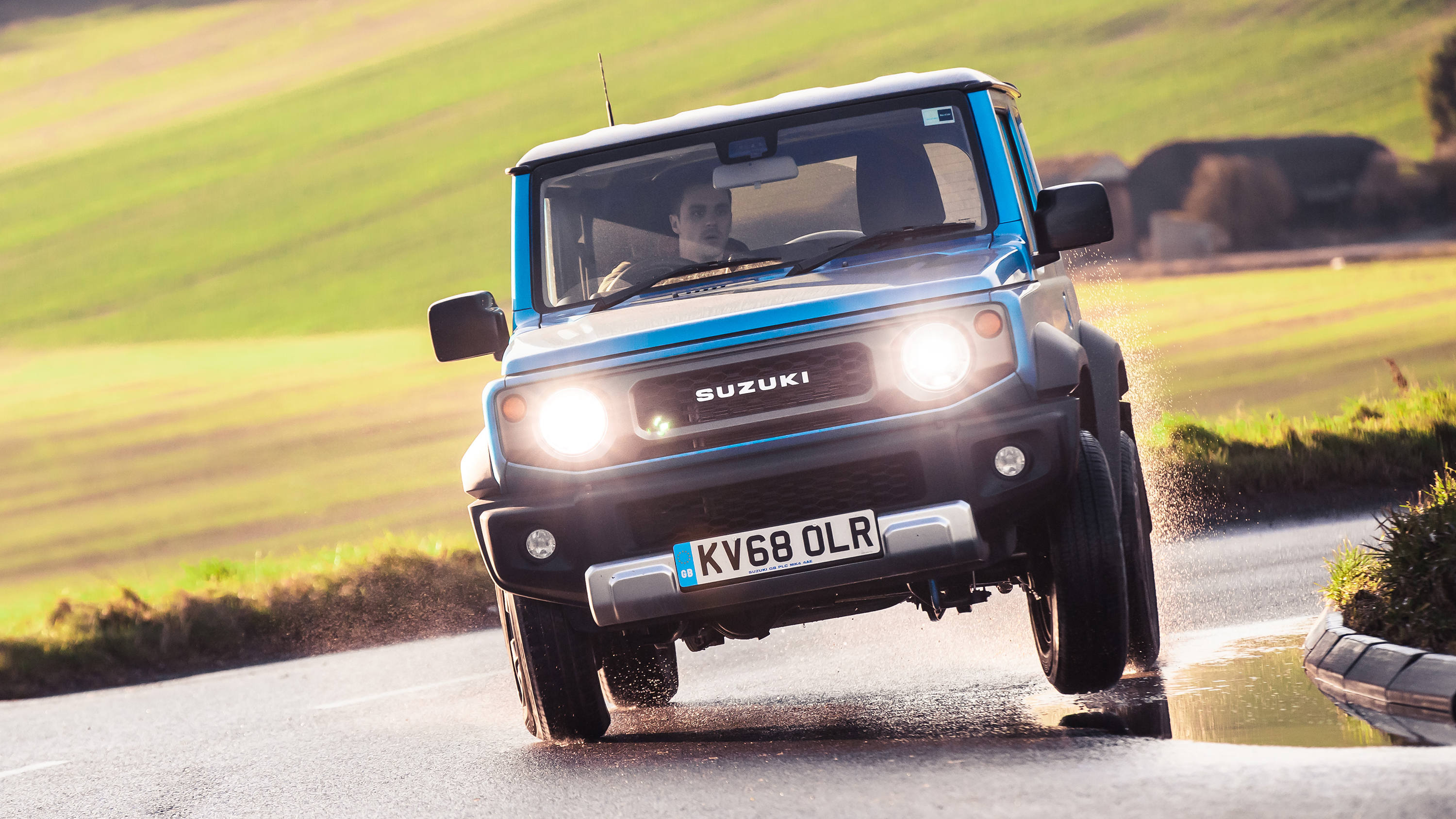
IS IT STILL ‘PROPER’ UNDERNEATH?
Yup. The Jimny is still based around a traditional steel, ladder frame chassis, but it gained a new, stiffer foundation for the car’s 2018 rebirth, supporting rigid front and rear axles with separate differentials, and a four-cylinder petrol engine with 100bhp and 95lb ft – not to mention 200cc more capacity than its predecessor. There is no turbo, no hybrid assistance, and no diesel. Suzuki never got round to confirming how quickly the 1.5-litre motor can haul 1,135kg of Jimny from 0-62mph, but if it’s under 12 seconds we’d be impressed, and buy the brave-shifting test driver a pint.
That boxy phizzog will eventually stop bullying the air at 90mph, but of far more relevance are claims of 35.8mpg and 178g/km on the WLTP eco cycle. Very modest numbers for a small, lightweight simpleton in 2018, aren’t they? Efficiency perhaps isn’t the Jimny’s strong suit, and with that comes the elephant in the room – the fact that Suzuki suspended Jimny sales in Europe in 2020. It’s made a glorious return for 2021, but reclassified as a Light Commercial Vehicle – aka van – to sneak around regulations for just a little longer. But unless Suzuki can squeeze some electrification in there somewhere, its days seem numbered.
YIKES.
You can still buy one though, it’ll just cost you. Lightly used Jimnys continue to pack the classifieds out with a healthy mark up on their RRP owing to their rarity – you can easily spend £25,000 or more on one. The LCV version, meanwhile, is a whisker under £17,000 before VAT, or an aesthetically satisfying £19,999 if you’re popping the tax back on to use it as a personal (rather than business) vehicle.
As standard you get a manual gearbox with five speeds, and a low-range transfer box for 4×4 scrambling. You can spec a four-speed auto, but it’s even more sluggish than the manual and fewer than ten per cent of Jimny-folk bother.
HOW COME?
See, the Jimny is supposed to be for the professional outdoors-type. The ones who spend their days in Gore-Tex, zips and double-laced boots, and only ever sip tea out of flasks. This isn’t some sort of pound-shop G-Wagen to pose on campus or outside pilates class. It’s a tool.
This new Jimny is 30mm shorter, 45mm wider and 20mm taller than before, to best balance off-road articulation and cabin space. It’s got a bigger boot, a wipe-down interior and hill-descent control. As standard you get delightfully utilitarian steel wheels, and there’s no option to paint those anti-scratch plastic bumpers and wheel arch spats body-colour. If that offends you, there are a hundred faceless crossover clones that will complement your life far less intrusively than the Suzuki. You know where to find them. Even Suzuki makes a couple.
But if you’re the sort of person who appreciates a flat-roofed vehicle because it’s easier to clear snow off and mount cargo racks to, or you favour cars with a roofing gutter so you’re not dripped on as you load the tailgate, then you might like the Jimny. You might like it a lot. You’ll be in good company, because despite its on-road haphazardness and packaging compromises, Top Gear likes it a lot too.
Fancy reading a long term review on the Suzuki Jimny? Click these blue words to find out more.
WHAT IS THE VERDICT?
The Suzuki Jimny is not a sophisticated crossover dressed up in waders, but its authenticity as an off-roader hasn’t unduly compromised it on the road. Certainly, it’s got more rarefied manners than any Jimny before now, and its hard-fought momentum and deliberate controls make it rollicking good fun to tack along in.
It’s got a litany of flaws – lacklustre performance and a shonky crash-test score among them – but in the end you just can’t separate the sheer joy of the way this rascal looks from the way it drives, and that irrepressible cute-meets-tough joy is what will make it ultimately a little cracker to live with. If it’s not your only mode of transport and you’ve managed to get hold of one at a vaguely reasonable price, that is…
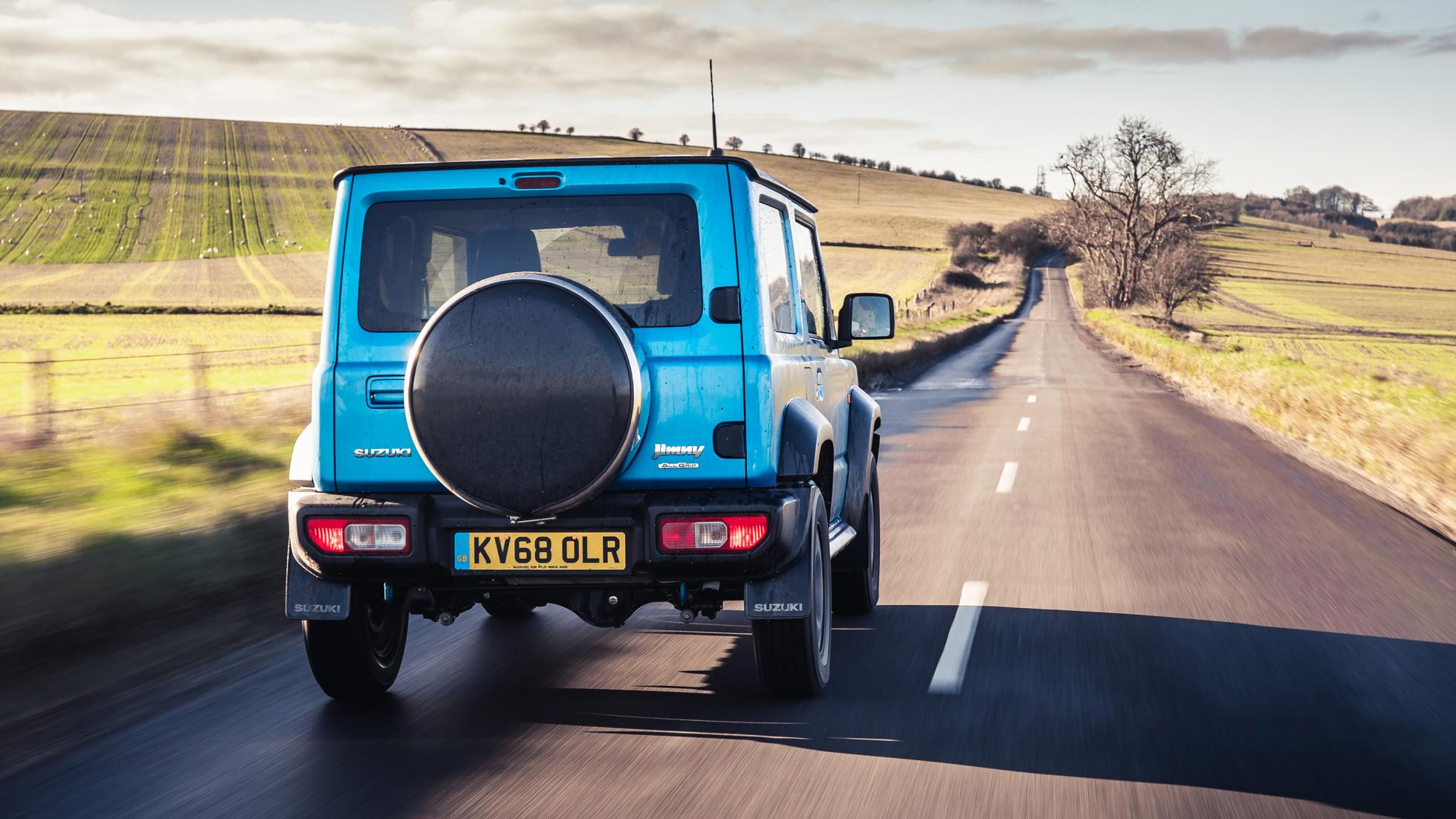
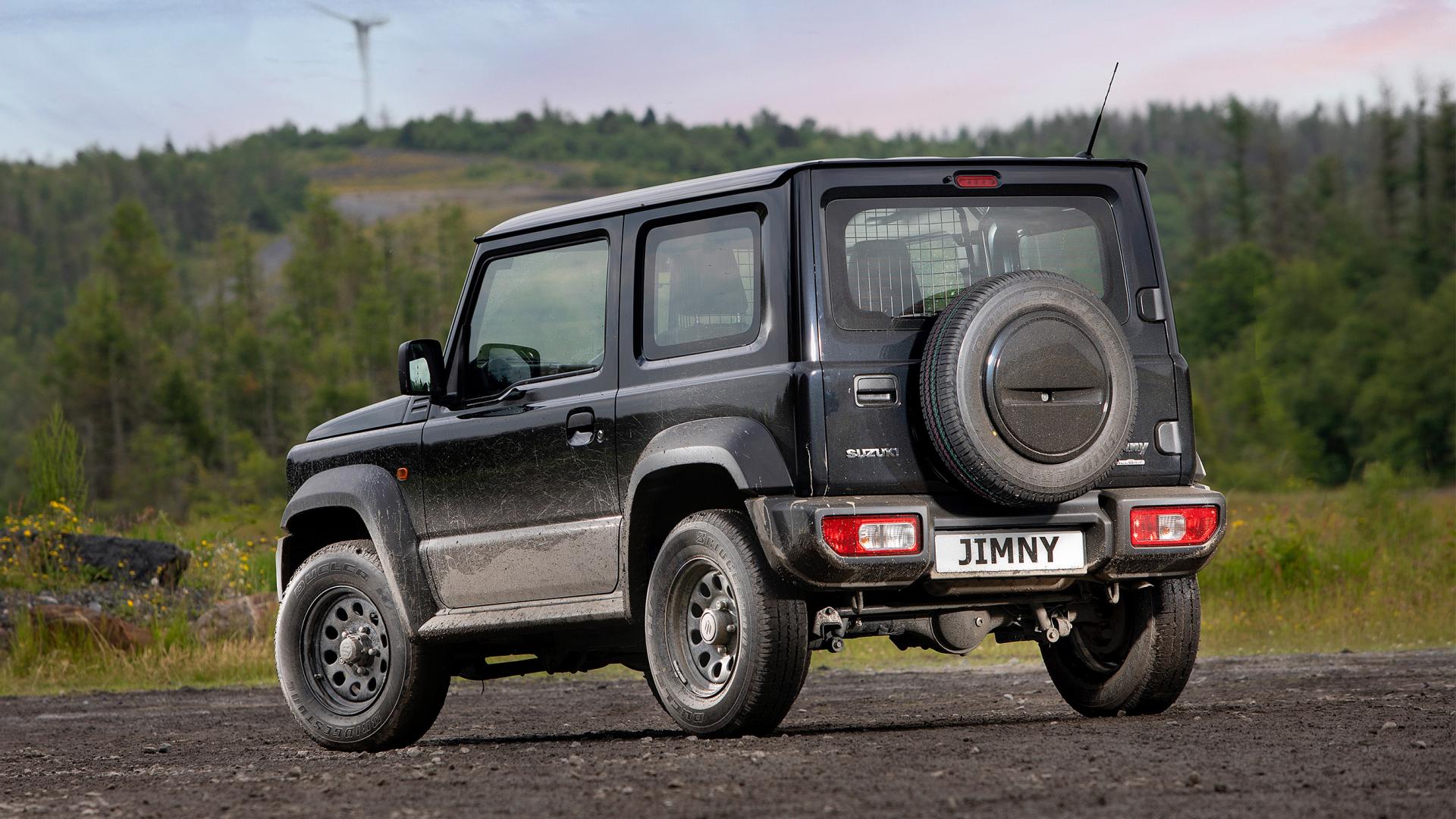
DRIVING
WHAT IS IT LIKE TO DRIVE?
Some cars belie their size, mass or stance and drive nothing like how you’d expect them to upon first glance. The Suzuki Jimny, I promise you, is not one of those cars. What it is, is a 1.7-metre-tall telephone box with only two-and-a-quarter metres between its wheels.
Wheels shod in chunky Firestone all-season tyres, connected to recirculating ball steering that’s geared to not relieve their driver of their thumbs on an undulating track, rather than the sort of racecar-like precision and delicate accuracy you’d get in, ooh, I dunno, a Dacia Duster.
DOES IT TAKE SOME ACCLIMATISATION?
Yep. The steering is arm-twirlingly slow and vague in the extreme, but this is fine. The car is small and doesn’t weigh much over 1.1 tonnes, so steering loads are never unduly lofty and it’s unlikely you’ll be leaning hard on the front end, testing its reserves of grip.
You’ve no need to, because Top Gear has boldly gone to discover what happens when you do, and the result is comical body roll, but not the premature surrender into safety understeer you might fear. There’s actually a load more front-end grip to cling on for than you’d expect, but you’ll be pushing through piercing tyre squeal and a paralytic sway to find it. Best take it easier.
The engine should help with that approach. This is a slow car. It doesn’t get off the line quickly, it doesn’t punch through the gears swiftly, and above 70mph, acceleration is by appointment only.
GIVE ME GOOD NEWS.
There are some pleasant surprises to be had once you’ve accepted this is not, say, a Skoda Karoq. First off, Suzuki’s done a good job of subtly curving the flat-looking windscreen so wind noise isn’t a disaster. The boxy mirrors create more bluster. And the gearshift is light and mechanically pleasant.
Oh, the change is lengthy – you’ll be handing over to a passenger halfway between third and second to let them take over the task – but the action itself is neat and satisfying. Just as well, as the gearing is short: 70mph equals 3,600rpm in fifth gear, and there are only five forward speeds. The 1.5-litre engine revs gruffly and gets into a shouting match with the transmission whine as the revs build. On the road, the Jimny’s happiest in two-wheel-drive mode, but you can drop the lever and engage all four tyres at up to 62mph for rougher stuff.
IS THAT WHERE IT SHINES?
The low-range gearbox will haul you over rutted tracks and up 38-degree slopes effortlessly if you go puddle-hopping. It’s as plucky off road as you’d hope and it seemed clear that its abilities far outstretched ours.
The traction control disengages with a single button prod, not a complex hold-then-count-to-forty-seven riddle, the hill-hold and descent modes did the trick, and it’s easy to spot on the trail too, because it’s boxier than an 8-bit Rubik’s cube and the visibility is excellent. Just watch out for that overhanging spare wheel out back – there’s no parking sensors or reversing camera to stop you scuffing your wheel before it’s ever been mounted to an axle…
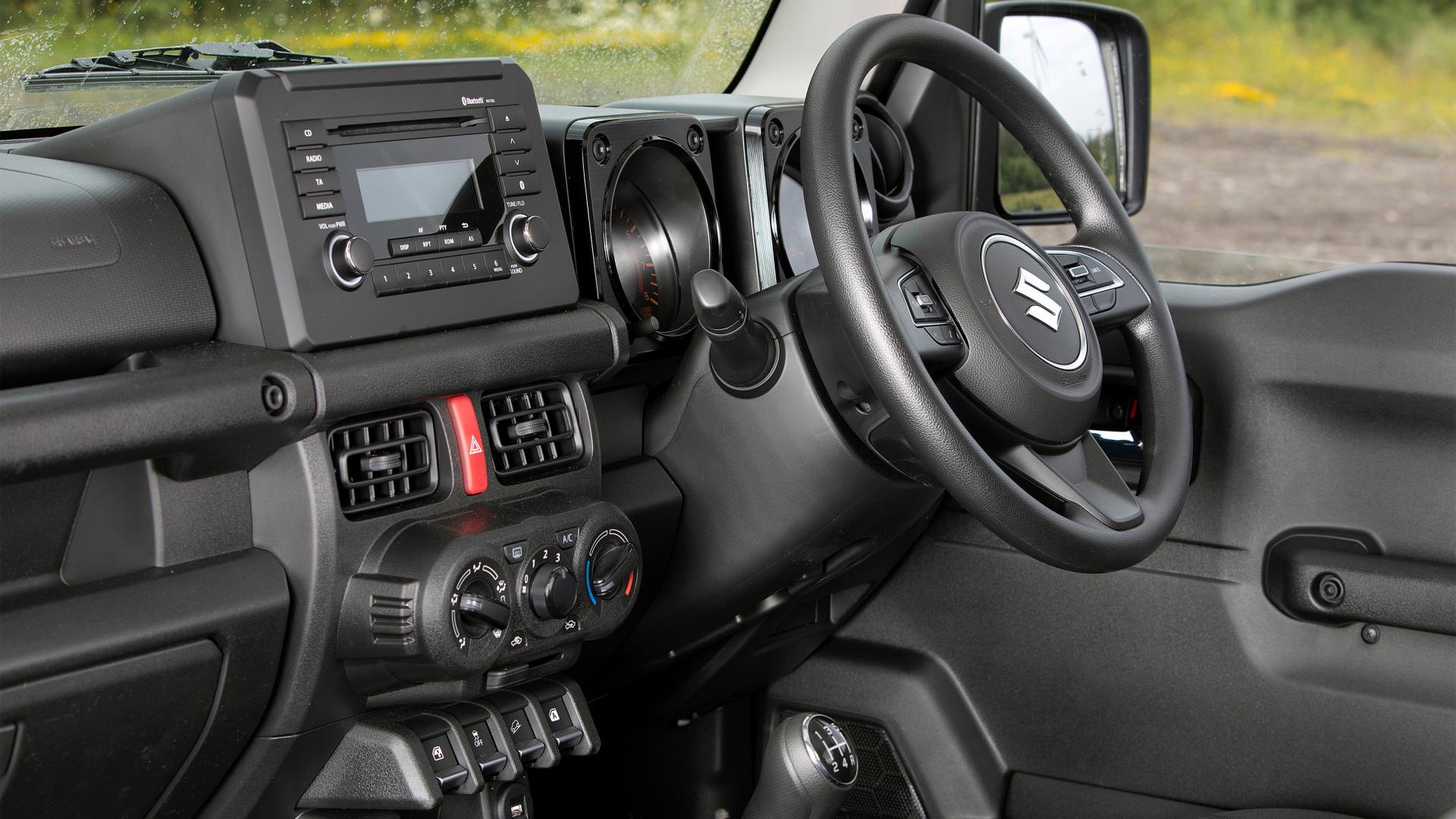
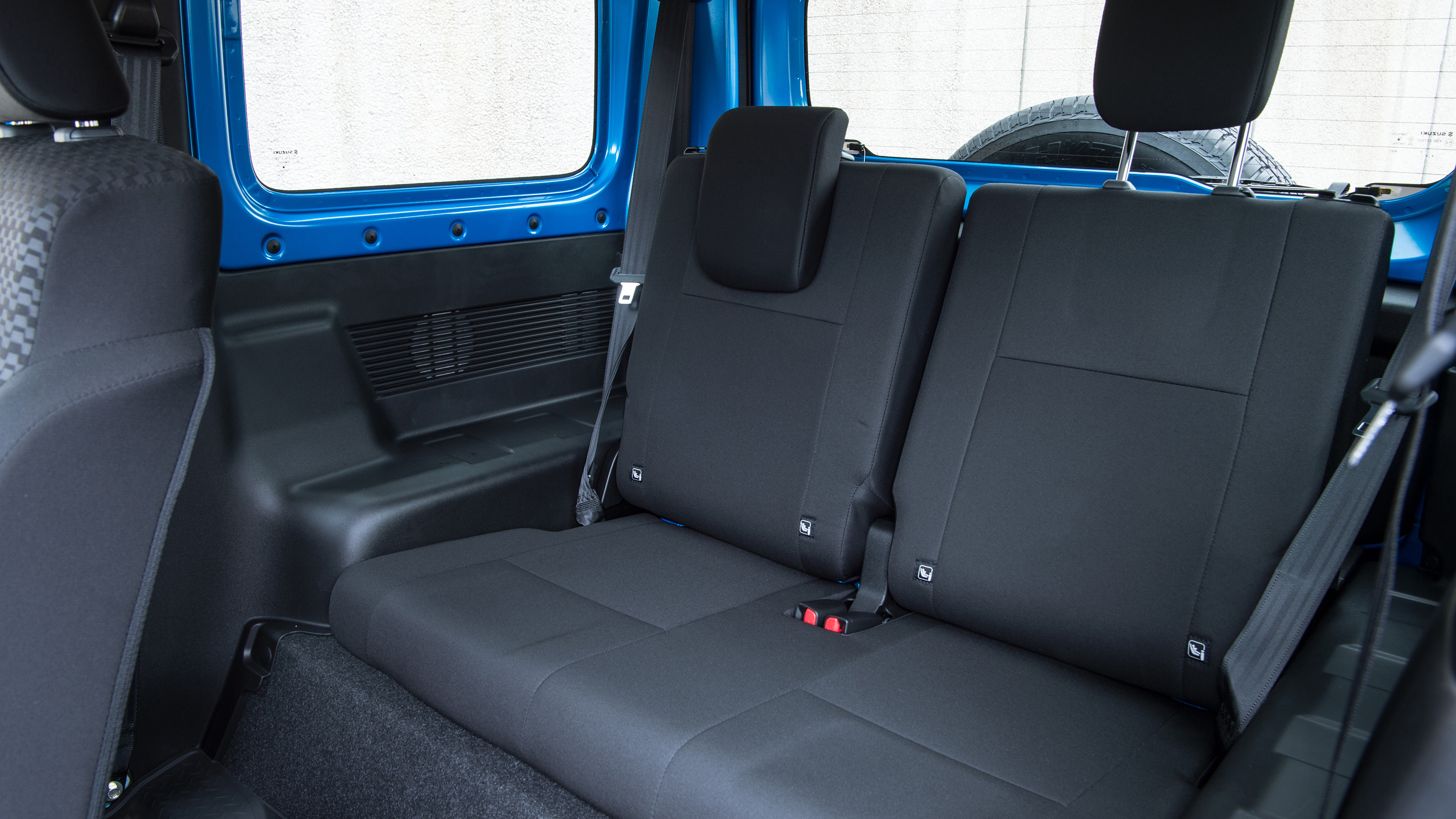
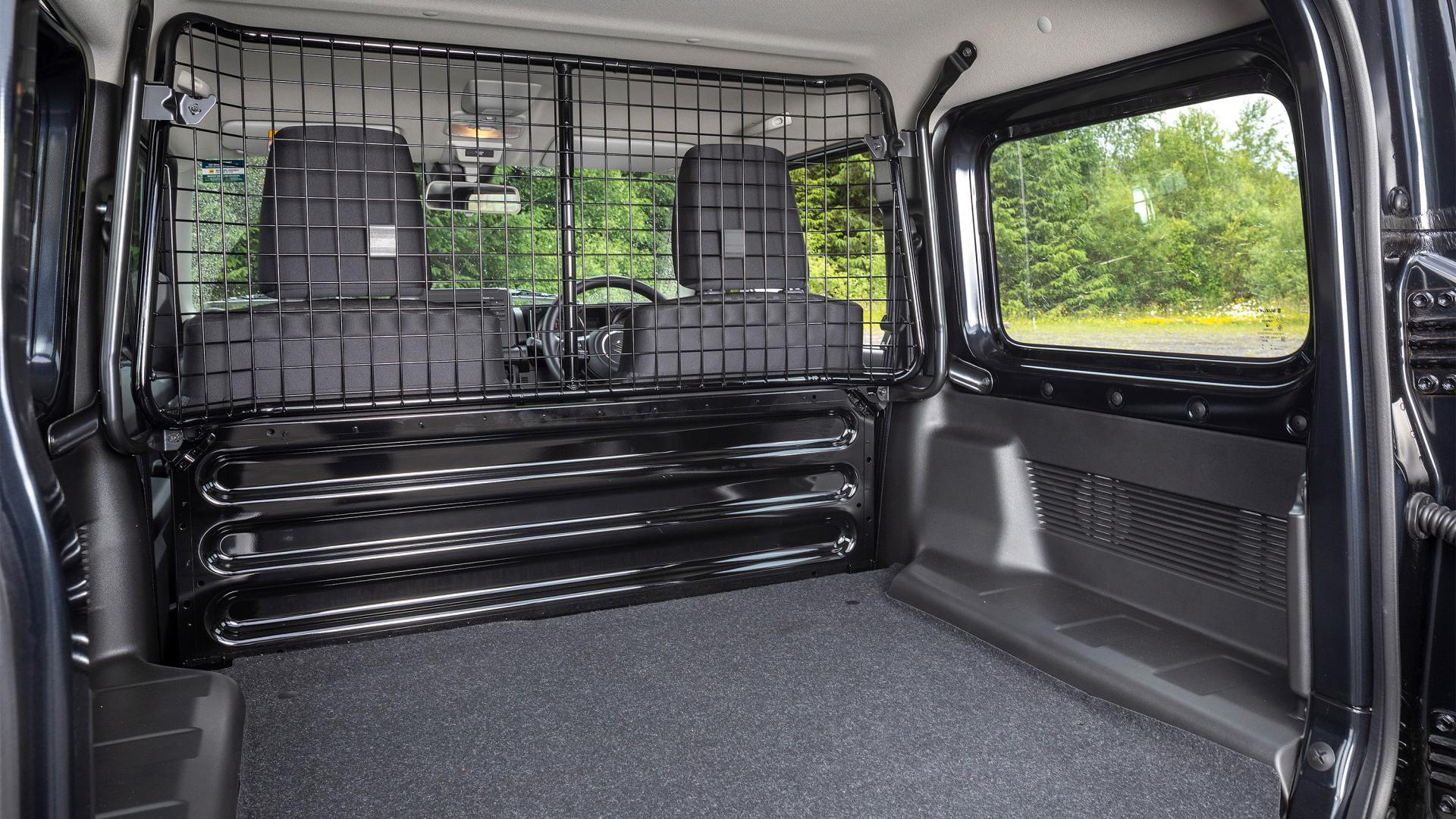
INTERIOR
WHAT IS IT LIKE ON THE INSIDE?
The Jimny’s theme of majoring on no-nonsense utilitarian hardiness with just a smattering of twee touches continues inside. You eye simple dials and a monochrome multi-function computer, but the clock faces are mounted in cool oblong pods with exposed bolt heads. Normally that’d constitute shoddy workmanship, but Suzuki’s made them an industrial feature.
So, we don’t mind that the dash is a cliff face of hard plastic. It feels solid, not brittle, and you could hang something a lot heavier than the Saturday takeaway from the passenger-side Jesus handle.
WHAT ABOUT GNARLY PRACTICAL STUFF?
You might find you’re short of stowage up front. The (undamped) glovebox is bijou, the door pockets are practically 2D and would be filled by a postcard, there are two small cupholders between the seats, and no sunglasses cubby in the roof. Nothing’s been allowed to eat into passenger space, which also transforms depending on what you’ve done with the front windows. Glass raised, there’s a shortage of elbow room – not as severe as in an old Landie Defender, but pinched all the same. Drop the windows via their centrally mounted switches and with an elbow perched atop the windowsill, motoring has rarely felt more cheerful.
The manually adjustable seats are comfortable, but lack ultimate off-road support, and face a steering wheel which only adjusts for rake, not reach. A six-foot driver can feel comfortable enough given time to acclimatise, but if they’d hopped straight in from a Jeep Renegade or Mazda CX-3 (as you can tell, picking a dead-on Jimny rival is tricky), then the Suzuki would’ve felt archaically awkward.
DARE I ASK ABOUT THE SEATS IN THE BACK?
The Jimny used to be able seat four adults, or offer 830 litres of luggage space. But it could not do these things at the same time. In fact, with the rear seat backs raised, the boot would struggle to swallow a MacBook Air. Swing the gas strut-assisted, hinged tailgate open (hinged from the right so it’s pavement-ready for the UK, Australia and Japan, but not for left-hand-drive markets) and you’d find that, beyond the 382mm wider loading bay, the backrests butt right up to the back window.
The two rear seats are pinched to the middle of the cabin for greater legroom and a superior view forward, and they are incredibly roomy, with enough headroom for proper adults and much more elbow room to be smug about. You can also fold the front seats near-flat and have them join the rear seat squabs as a makeshift bed. Happy camping.
Tug a simple fabric loop and they spring flat into the floor, revealing their plastic chequer plate loading surface that ought to be easy to wipe clean. That’s your lot, gimmick-wise. There’s not going to be a five-door, or a long-wheelbase. Basically, it’s a 2+2 city car, or a covered pick-up truck.
Of course this is all moot now that brand-new Jimnys only come with the seats removed, a cage betwixt front occupants and load bay, and an embiggened capacity (now 863 litres). Just bear in mind the payload is a pretty paltry 150kg – a mere third of what Dacia’s commercial Duster offers. This is a van you’re buying for its off-road nous, its hipster-retro looks, or its fairly unique combination of the two.
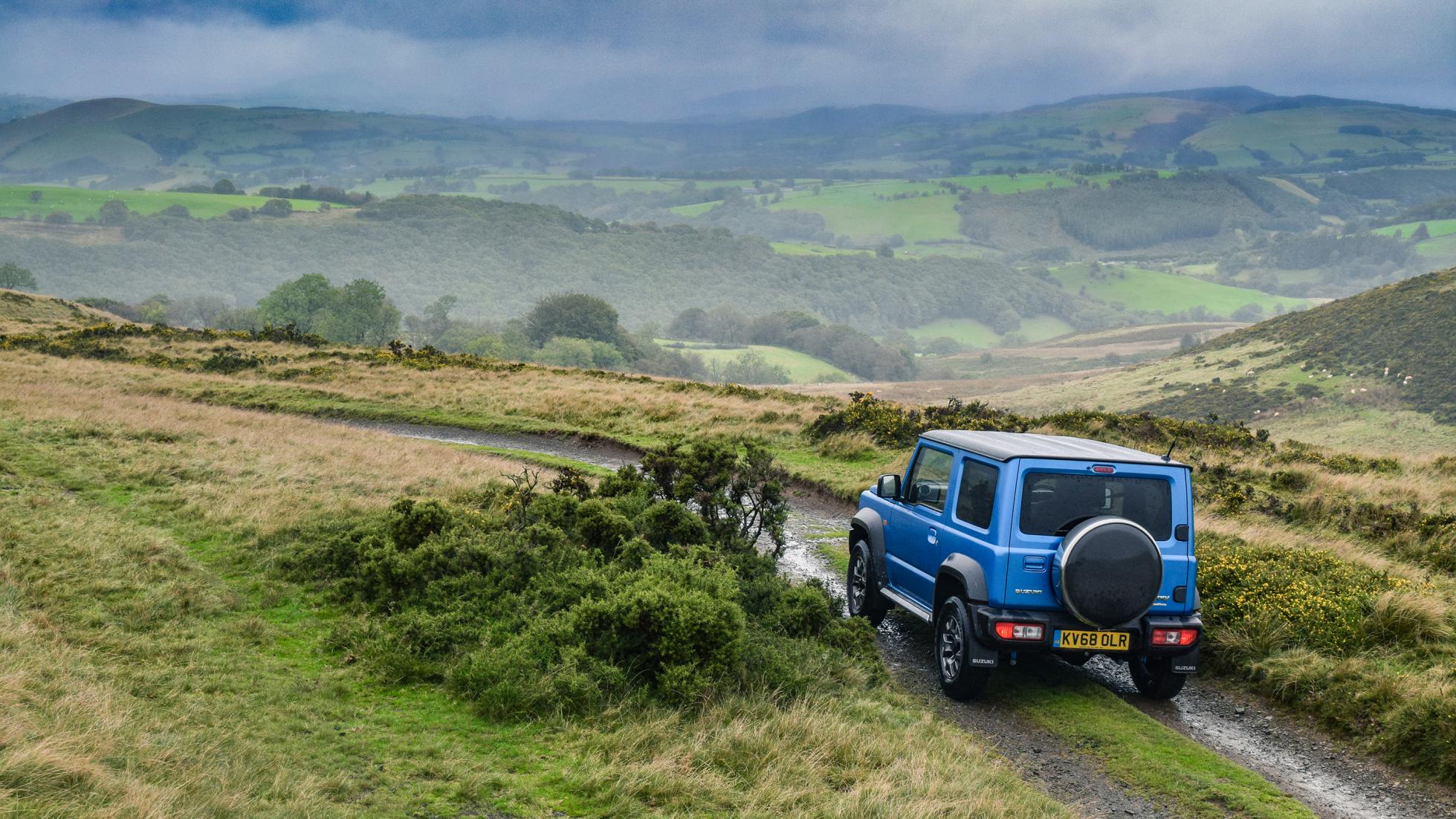
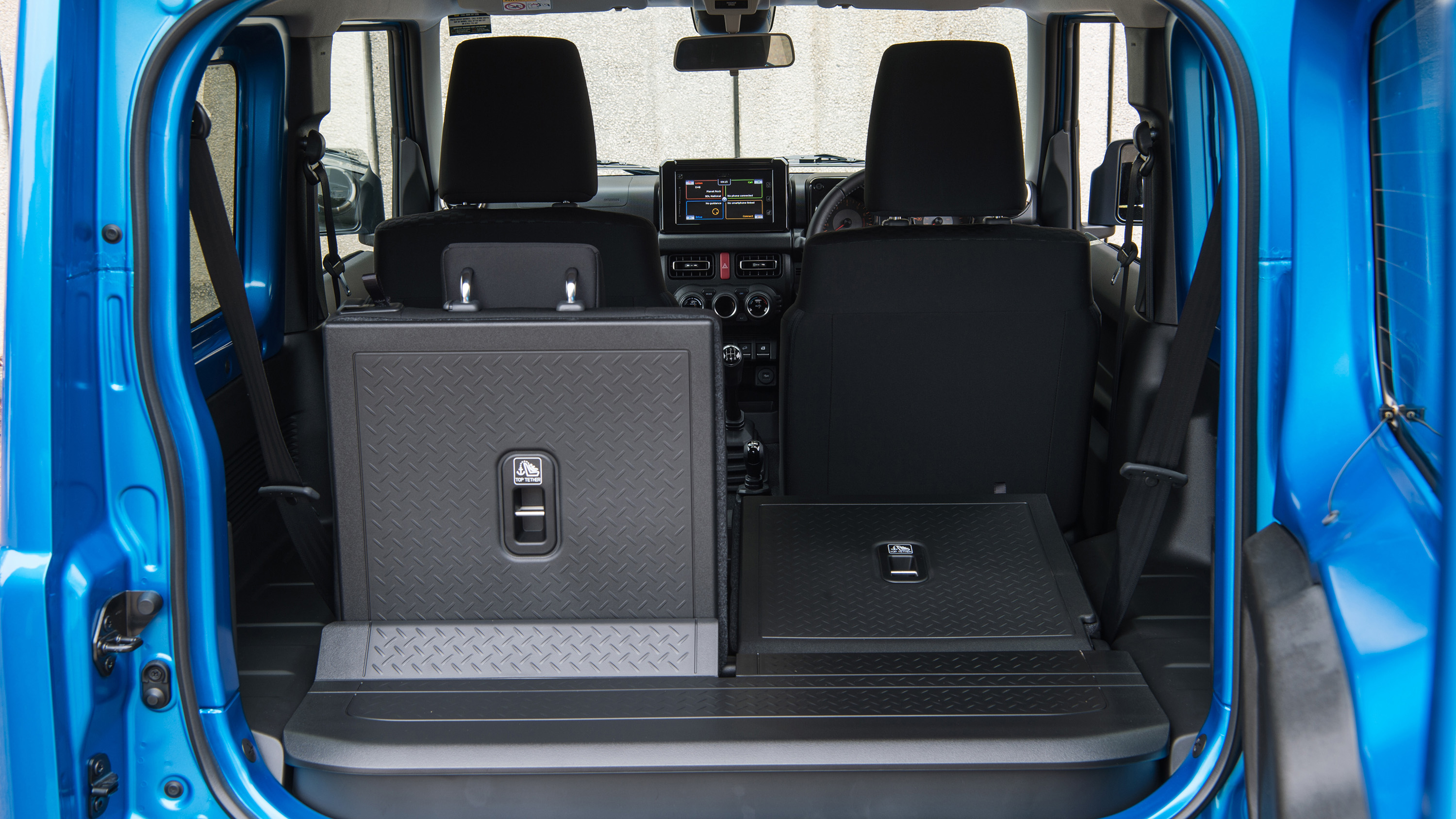
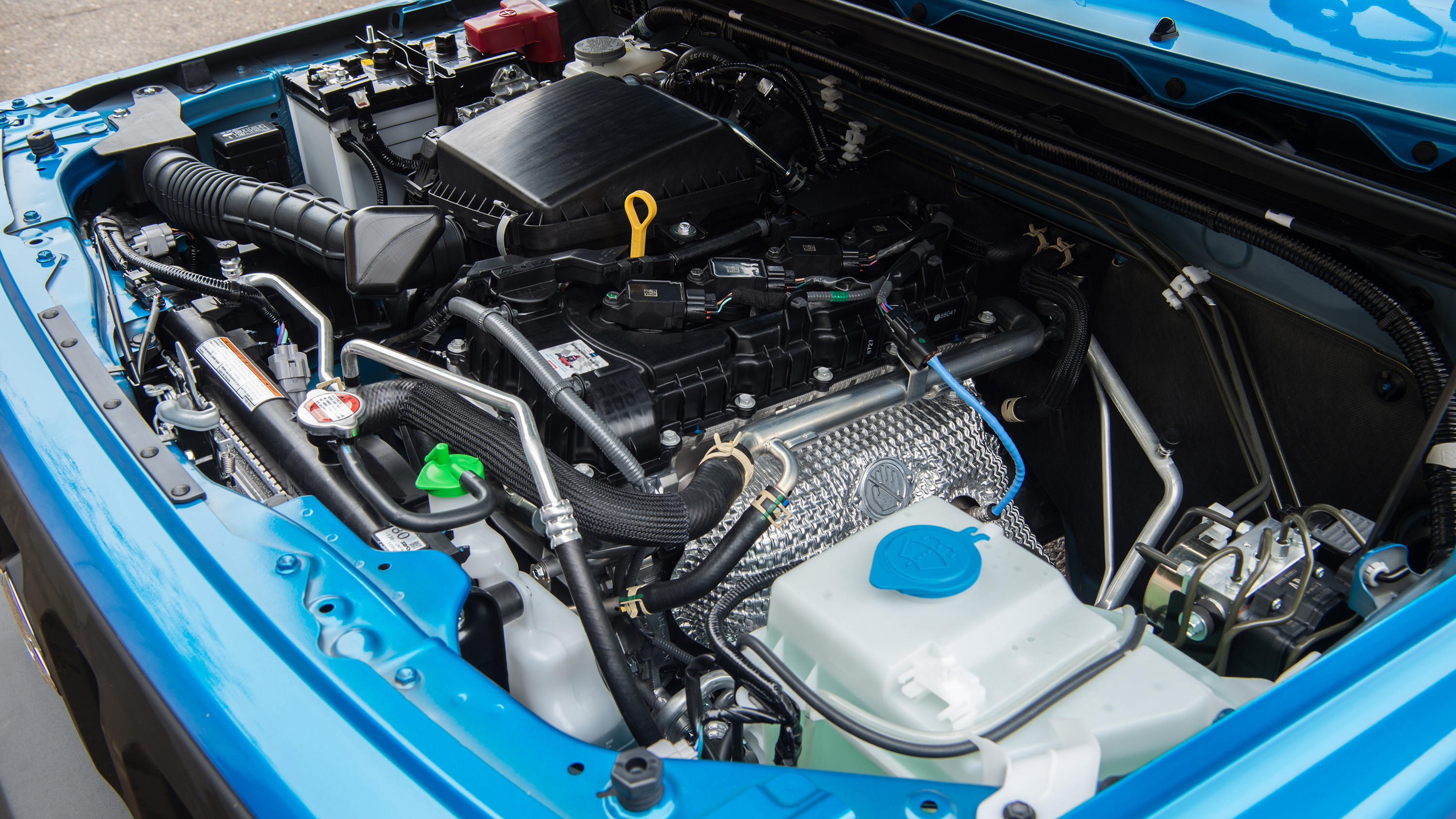
BUYING
WHAT SHOULD I BE PAYING?
Oh yes, another moot point in a review increasingly chockful of them. Buying a Jimny is not the work of a moment. Every other car in Suzuki’s range is an online click away, and it’s borderline illegal to purchase a Swift or Vitara without the dealer throwing in a significant discount. The Jimny – once again – is different.
First up, you can’t buy a Jimny car new any more. The second-hand market has a decent amount, but they’ve essentially been snapped up by speculators like they’re 458 Speciales, and as such you’ll be paying roughly 20 per cent more than they cost new as a rarity tax. As we type in 2021, the going rate for lightly used Jimnys is £25,000 to £30,000. Let us be clear that you’re not getting £25,000 to £30,000 worth of talent and please take the car for more than a run around the block before parting with such serious money for one. The Jimny is utterly charming but on an objective level, it’s overpriced at this sort of money.
Second, you can buy a Jimny van. But there’s another parallel with the supercar special market in that each dealer is getting allocated a couple of cars and you might need to be a godparent to the sales manager’s first-born to have a hope of getting one. The UK gets 480 Jimny LCVs in 2021 with Suzuki acknowledging it could sell ten times as many if the stock existed. If you’re ducking the VAT and paying less than £17,000 for one, then suddenly the Jimny’s back wearing a price tag that fits comfortably.
While the four-seater came with a choice of trim levels – top-rung SZ5 adding lots of desirable bits, including that touchscreen setup – the LCV has just one specification available, and it’s adorably basic. No sat nav or climate control, just a digital radio and regular air con. There are buttons galore inside.
While you’ve a choice of colours up top – including a two-tone scheme like our old Jimny Long-Term Test Car– the natty steel wheels never change. All the better for bashing mercilessly down bumpy lanes as you travel the countryside with your rural dog grooming business operating out the back.
One final note for the real chink in the Jimny’s armour: it’s crash test rating. Like Suzuki’s Ignis, the Jimny only scores three stars in the Euro NCAP crash tests. NCAP found the driver’s airbag ‘bottomed out’ and allowed the driver’s head to impact the steering wheel, and ‘extensive deformation’ in the body structure around the doors. Its head restraints were also rated weakly.
Source topgear.com


